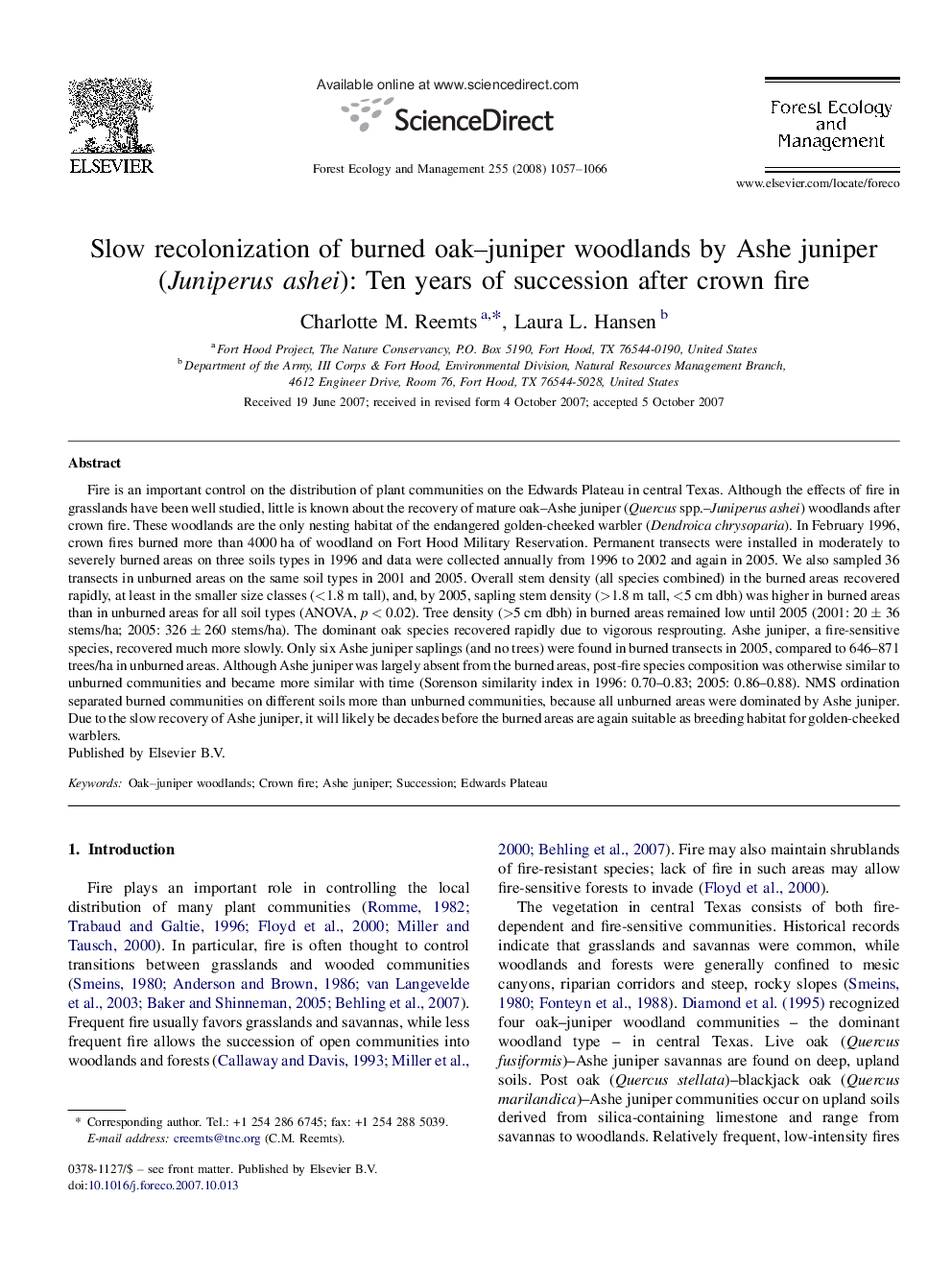| کد مقاله | کد نشریه | سال انتشار | مقاله انگلیسی | نسخه تمام متن |
|---|---|---|---|---|
| 89884 | 159358 | 2008 | 10 صفحه PDF | دانلود رایگان |

Fire is an important control on the distribution of plant communities on the Edwards Plateau in central Texas. Although the effects of fire in grasslands have been well studied, little is known about the recovery of mature oak–Ashe juniper (Quercus spp.–Juniperus ashei) woodlands after crown fire. These woodlands are the only nesting habitat of the endangered golden-cheeked warbler (Dendroica chrysoparia). In February 1996, crown fires burned more than 4000 ha of woodland on Fort Hood Military Reservation. Permanent transects were installed in moderately to severely burned areas on three soils types in 1996 and data were collected annually from 1996 to 2002 and again in 2005. We also sampled 36 transects in unburned areas on the same soil types in 2001 and 2005. Overall stem density (all species combined) in the burned areas recovered rapidly, at least in the smaller size classes (<1.8 m tall), and, by 2005, sapling stem density (>1.8 m tall, <5 cm dbh) was higher in burned areas than in unburned areas for all soil types (ANOVA, p < 0.02). Tree density (>5 cm dbh) in burned areas remained low until 2005 (2001: 20 ± 36 stems/ha; 2005: 326 ± 260 stems/ha). The dominant oak species recovered rapidly due to vigorous resprouting. Ashe juniper, a fire-sensitive species, recovered much more slowly. Only six Ashe juniper saplings (and no trees) were found in burned transects in 2005, compared to 646–871 trees/ha in unburned areas. Although Ashe juniper was largely absent from the burned areas, post-fire species composition was otherwise similar to unburned communities and became more similar with time (Sorenson similarity index in 1996: 0.70–0.83; 2005: 0.86–0.88). NMS ordination separated burned communities on different soils more than unburned communities, because all unburned areas were dominated by Ashe juniper. Due to the slow recovery of Ashe juniper, it will likely be decades before the burned areas are again suitable as breeding habitat for golden-cheeked warblers.
Journal: Forest Ecology and Management - Volume 255, Issues 3–4, 20 March 2008, Pages 1057–1066